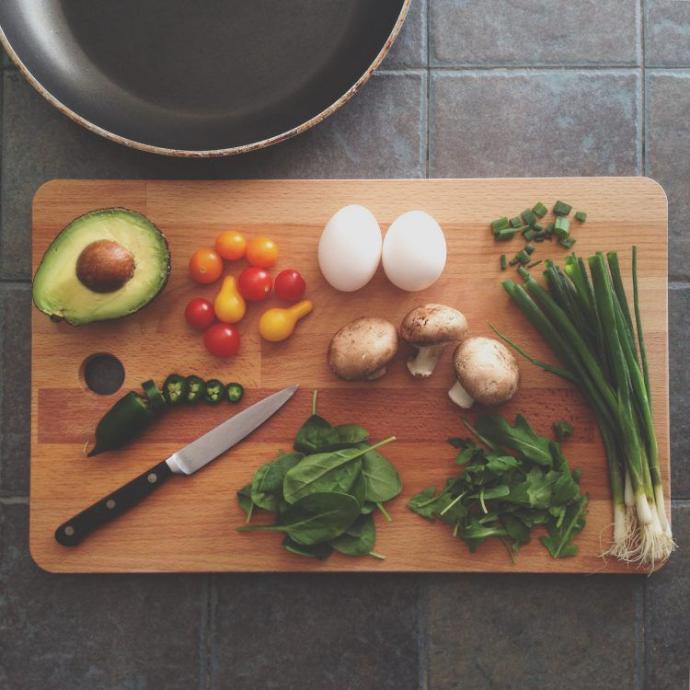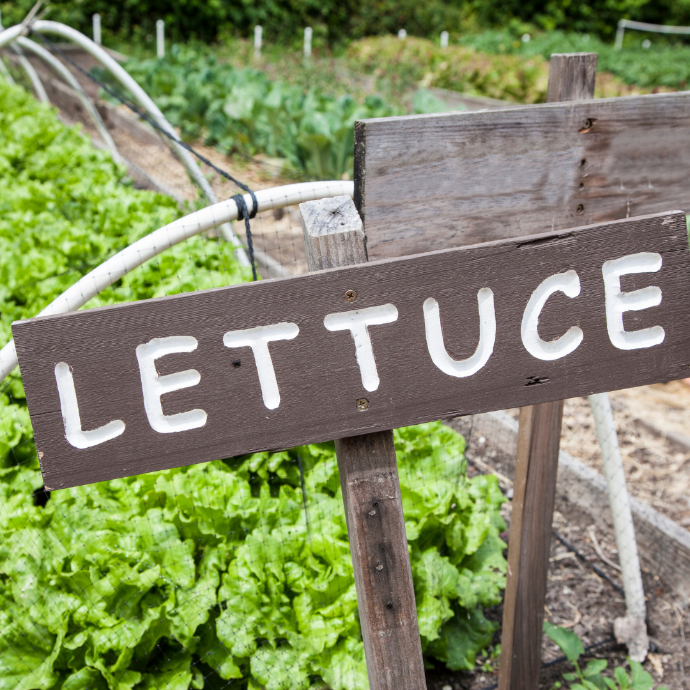And I mean Teach (not preach) Food (not nutrition) to our children.
Forget nutrition education for children (or even adults for that matter), we need to go back to basics and teach food education first.
It might sound like this dietitian has gone crazy (not teach nutrition?!?) but let me explain...There is plenty of pressure on educators to teach healthy habits. The numbers are all doom and gloom (ba ba ba boom)....childhood obesity, not eating enough veggies (especially if we remove the poor potato) and too many 'discretionary' foods (foods outside of the core food groups). And you know what...we are trying but it's hard (screwed up faces at the lunch table) and sometimes our best intentions are a little misplaced (exhibit A: letters to parents for inappropriate lunch box choice). Under the pressure, it's easy to forget that we aren't trying to force feed vegetables to children, we are trying to teach them to learn to like vegetables (and any other food - but anyone who knows me knows that vegetables are my passion).
Research shows that food habits track. So what you eat and your relationship with food as a child strongly dictates your choices as adults.
If we take the focus off nutrition for a moment and forget "eat this cause it's good for you" and forget to worry about serving sizes of vegetables; how do we get children (or even adults) to learn to like new foods?

Well like any learning, it's a journey...
Step 1. Build knowledge and awareness
Step 2. Acceptance (willingness to try)
Step 3. Choosing to eat it (willingness to consume)
Like with any learning, some people take longer than others to learn but everyone can learn. And like with any learning, progression is not always perfectly linear. Remember to keep things positive and fun (So release the pressure, off yourself and the children!)
1. How to increase food knowledge and awareness
Food education begins away from the table. Increasing food knowledge and awareness away from the table includes learning the names of fruit and veg through experience with them (colouring in, painting them, stickers), reading books about fruit and veg, ask children to help with the shopping (can you get me three carrots), talk about the colours of fruit and veg, get children in the kitchen or garden. Increasing awareness at the table includes role model eating foods you'd like your children to eat. Don't go over the top with preaching the food to your children, just show them you are eating it and enjoying it. You can talk about your senses - what colour is it? Does it crunch when you bite it? Try to stay calm and instead of focusing on what children are eating, focus on creating a nice eating atmosphere. Maybe children can help set the table with some nice plates, pick some flowers from the garden or fold some napkins.
2. Acceptance (willingness to try)
It takes about 20 exposures to a food (above) for a child to trust that food and build the confidence to try it (but don't bother counting, just keep helping them to learn)
Away from the table
: involve children in fruit and veg shopping and gardening - if they'd like to buy or try sometime, let them. Cook and garden with the children, again let them try when they want. But no cajoling or pressuring (this will backfire in the long term). Let them naturally progress from awareness to accept themselves.
At the table:
Try serving foods, family style and/or deconstructed. Have dishes in the middle and let children serve themselves. You, as the educator, choose what goes in the middle of the table but the children decide what makes it onto their plates and into their mouths. Make sure you have one element on the table that children have already learned to like (rice, bread, cucumber, carrot or even some grapes). Read more about deconstructing food.
Also, try serving foods in different ways. Carrots can be steamed, served with a dash of honey, eaten raw as sticks with dips, grated in a sandwich, stir-fried or roasted into chips.
Step 3. Choosing to eat it (willingness to consume)A child needs to try a food up to twenty times before they learn to like it (again, don't bother counting, just keep offering).
Away from the table: help with cooking, gardening and meal planning. Ask them what flavours they think might go together for a meal? What red fruit or vegetable would they like in their lunchbox today?
At the table: continue to have family style meals. Slowly over time, you will see child increase the variety on their plate. But remember to focus on the mealtime atmosphere, rather than exactly how many bites the child has taken and if they have picked out the peas. Disclaimer: in extreme cause of fussy eating (excluding full food groups) please see a dietitian. If you enjoyed this article, you will LOVE a the Inspiring healthy, colourful, and adventurous eaters PD Incursion with Kate. Looking for more to read? There
One last thing - If you want a cool new book for increasing vegetable knowledge and acceptance in a fun way...please check out our Kickstarter campaign for our new book "what if Vegetables Were People" pledge your support and be the first to get a copy of the book. Help us on our mission to raise veggie loving children!
Kate is a dietitian, passionate at improving the eating habits of families and communities. She created
She believes everyone and anyone can cook and empowers people to get back in the kitchen and prepare simple, colourful dishes. She has a keen interest in the non-diet approach to eating. With over 10 years of nutrition and dietetic experience, Kate enjoys media work and has appeared on TV, radio and print both in Australia and Overseas. Read about her workplace wellness programs or her blog.
